Fine chemical wastewater
Electronic semiconductor wastewater
Textile-dyeing Wastewater
Fine chemical wastewater
Pesticide Wastewater
New Material Wastewater
Pharmaceutical Wastewater
Industrial wastewater treatment
Electronic semiconductor wastewater
The sources of electroplating wastewater are generally:
(1) Cleaning water for plating parts;
(2) Waste electroplating solution;
(3) Other wastewater, including flushing the workshop floor, scrubbing the electrode plates, condensing water from ventilation equipment, as well as various tank liquids and drainage caused by "running, emitting, dripping, and leaking" due to plating tank leakage or improper operation and management;
(4) Equipment cooling water, which has not been contaminated during use except for temperature rise;
(5) Metal surface treatment: Metal surface treatment includes cleaning, electroplating, passivation film protection, mechanical processing, and coating before surface treatment, mainly focusing on electroplating.
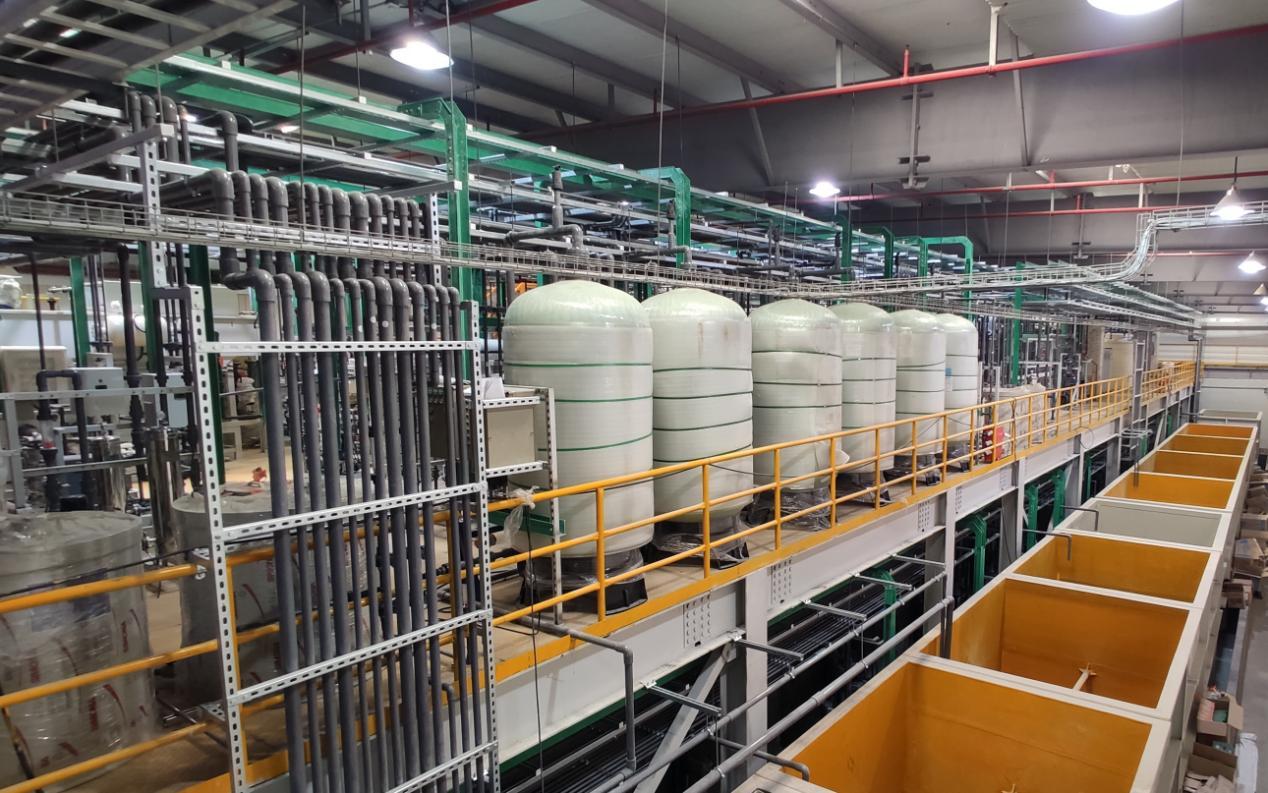
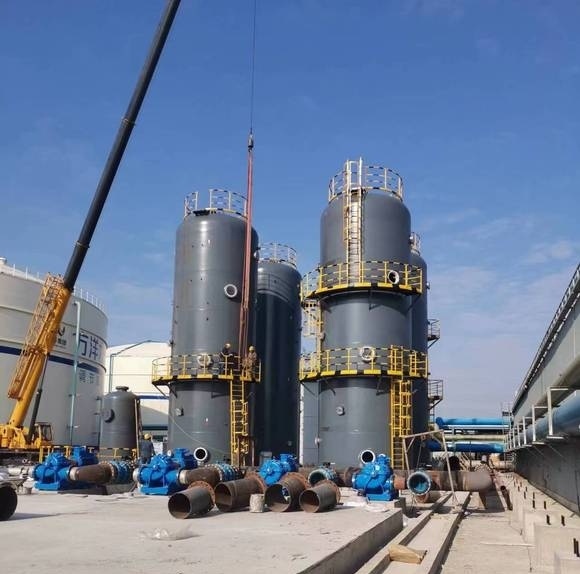
Industrial wastewater treatment
Classification of electroplating wastewater
Classification of electroplating wastewater
Currently, the treatment of electroplating wastewater in China mainly involves dividing it into three categories.
(1) Chromium containing wastewater: Hexavalent chromium is mainly treated through reduction.
(2) Cyanide containing wastewater: mainly treated with cyanide breaking.
(3) Other wastewater: containing copper, nickel, zinc, etc.
Pollution characteristics of electroplating industry wastewater
The wastewater quality in the electroplating industry is complex, containing heavy metal ions such as chromium, zinc, copper, nickel, cadmium, acids, alkalis, as well as highly toxic impurities such as cyanide. The wastewater in this industry has the following characteristics:
(1) The components are complex and pollutants can be divided into two categories: inorganic pollutants and organic pollutants.
(2) The water quality changes greatly, and there are various types of pollutants in various production wastewater streams, with a large coefficient of change in CODcr.
(3) Wastewater is highly toxic and contains a large amount of heavy metal ions. If discharged directly without treatment, it will cause great pollution to the surrounding water bodies
Industrial wastewater treatment
Electroplating wastewater treatment
3. Electroplating wastewater treatment methods
a. The physicochemical methods for wastewater pretreatment (air flotation, point hydrolysis, ion exchange/extraction) effectively removes most of the heavy metals in the wastewater, reduces toxicity, and enhances the biodegradability of the wastewater.
b. The biochemical treatment adopts contact oxidation treatment process, effectively remove CODcr and reduce investment and operating costs.
c. The waste acid is treated with a "regular discharge and daily treatment" method to avoid significant changes in the water quality of the regulating tank which could affect subsequent treatment processes. The salt content in the waste acid is high, and if treated at once, it will cause a sharp increase in CL - concentration in the water body in a short period of time, causing inhibition or even death of activated sludge.
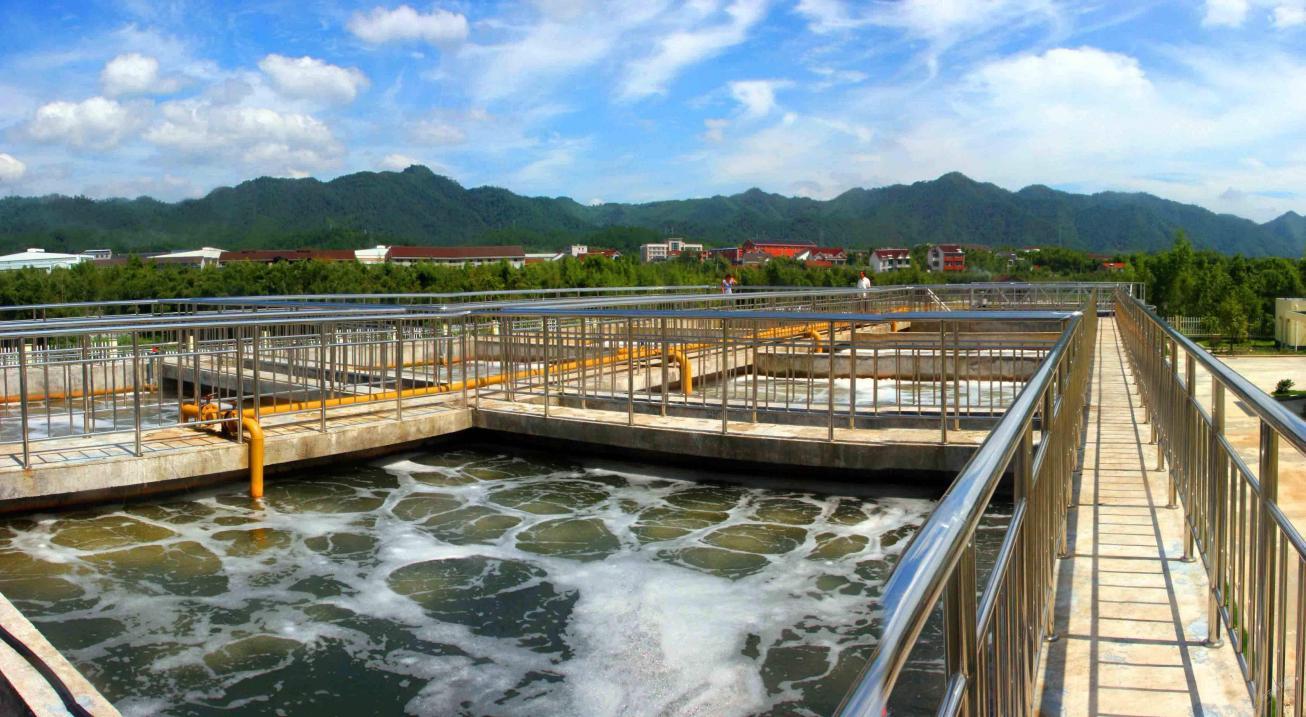
Industrial wastewater treatment
Electronic semiconductor wastewater
1、 Sources and chemical composition of pollutants in electronic semiconductor wastewater
The electronic semiconductor wastewater comes from the wastewater generated during the semiconductor grinding process, such as acid-alkali wastewater, semiconductor grinding wastewater, semiconductor fluoride wastewater, semiconductor phosphorus wastewater, and semiconductor ammonia nitrogen wastewater. Organic wastewater from semiconductors also comes from etching wastewater, plating wastewater, cleaning wastewater, etc. of semiconductor integrated circuits. The direct discharge of these wastewater can cause certain pollution to the surrounding environment. In the entire process of production, manufacturing, and recycling of electronic products and related metal products, a large amount of electronic wastewater is generated. The composition of electronic wastewater varies, and the types and contents of pollutants also vary. The chemical components of pollutants in electronic semiconductor wastewater include phosphorus, fluoride ions, ultrafine particles, ammonia nitrogen, organic matter COD, heavy metal ions, etc. All of them contain heavy metal ions such as chromium, copper, nickel, cadmium, zinc, lead, mercury, cyanide, and some acidic and alkaline substances.
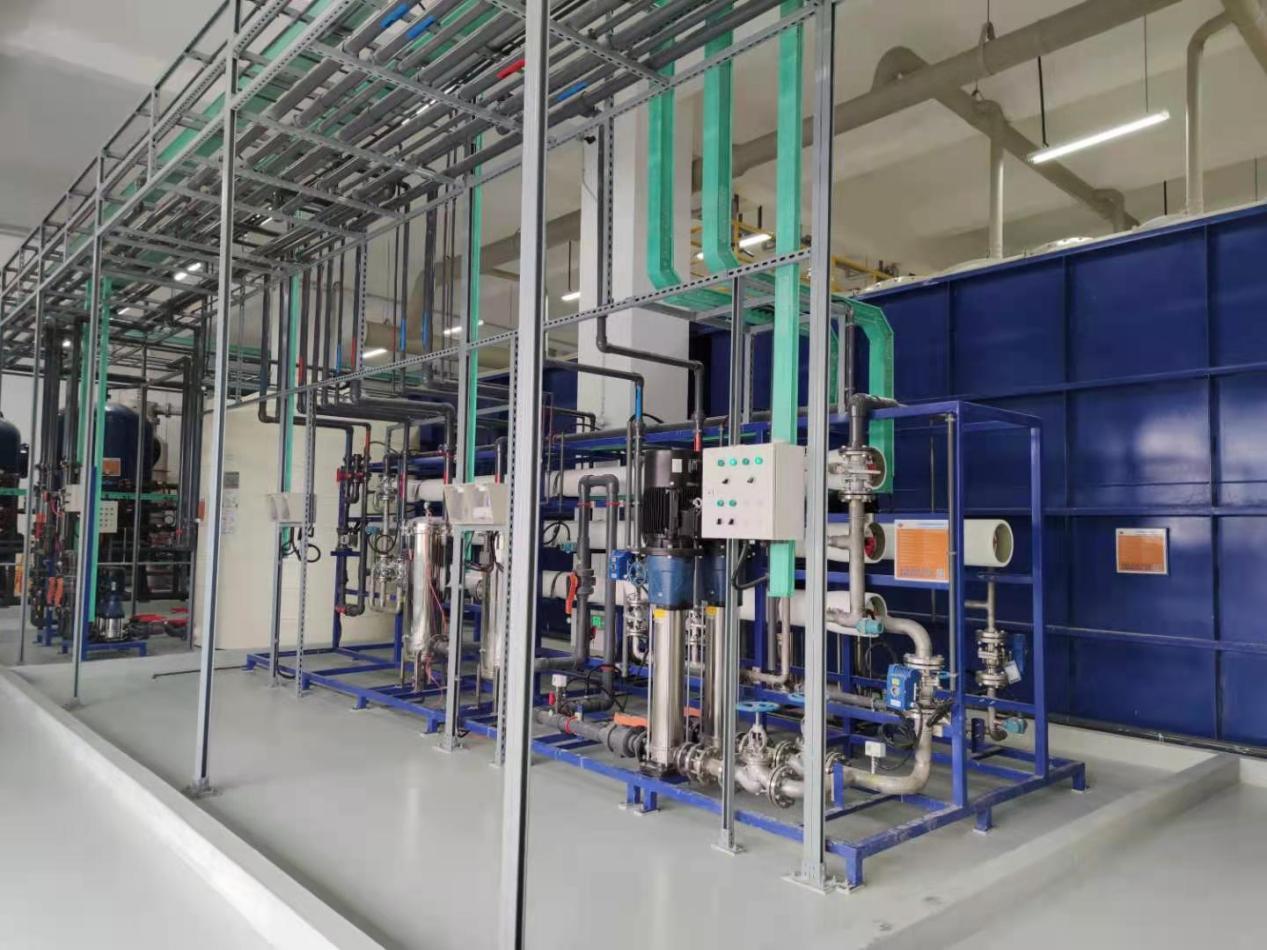
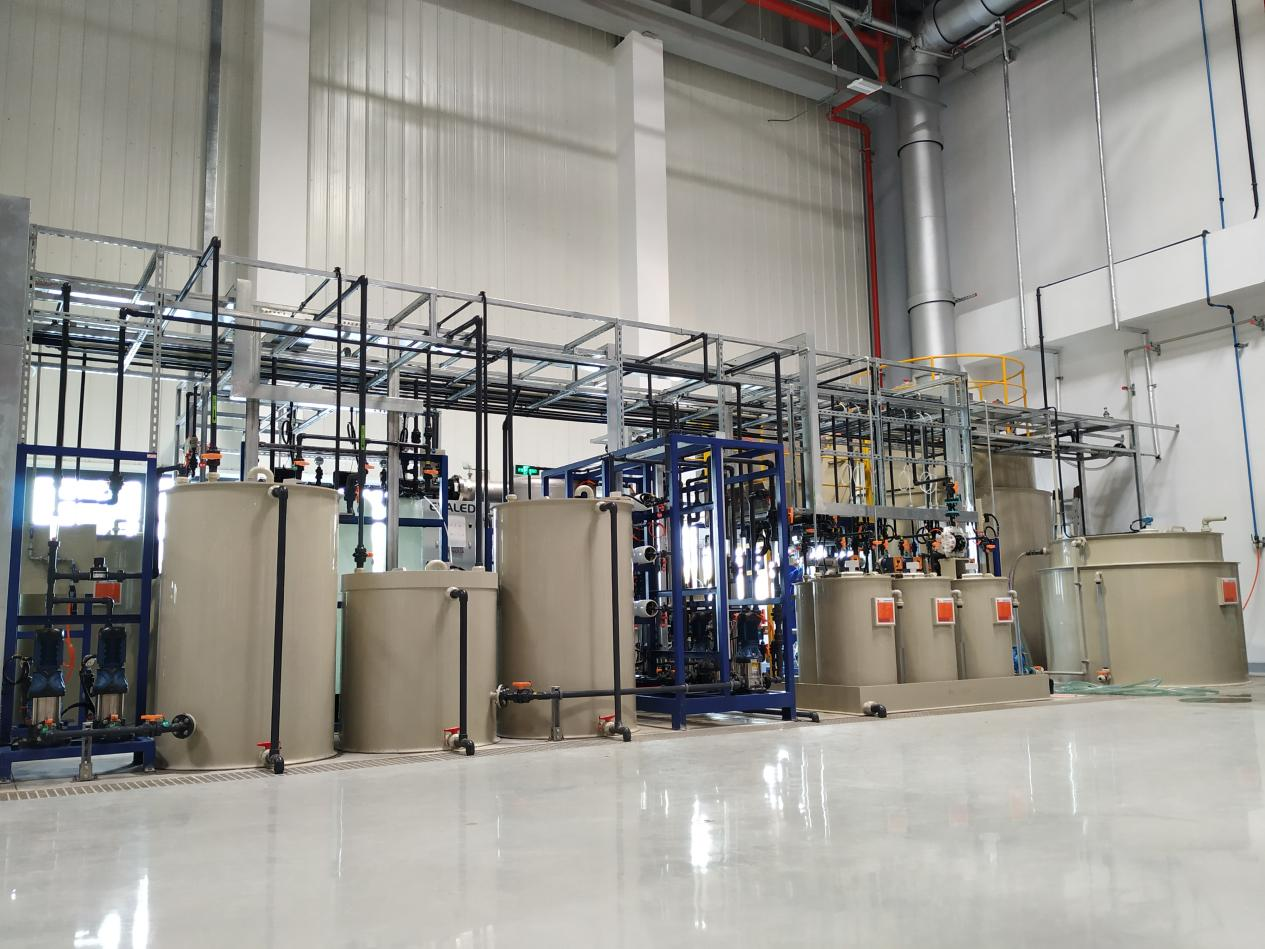
Industrial wastewater treatment
Electronic semiconductor wastewater
The heavy metal ions in wastewater have characteristics such as long toxicity, non biodegradability, and can be accumulated in organisms, causing dysfunction of biological functions and posing serious harm to the ecological environment and human health. Therefore, for the treatment of electronic semiconductor wastewater, it is necessary to build a targeted electronic semiconductor wastewater treatment system project based on the specific situation of each production enterprise and the local industrial wastewater discharge standards, in order to ensure the efficient and stable operation of the wastewater treatment station after completion
Industrial wastewater treatment
Electronic semiconductor wastewater treatment
2、 Treatment methods for electronic semiconductor wastewater
The treatment of electronic semiconductor wastewater mainly focuses on membrane deep treatment and recycling.
Coagulation pre-treatment+sand filtration+ultrafiltration+reverse osmosis membrane method, the selection of coagulants is the most crucial for coagulation pre-treatment. Ordinary coagulants such as polyaluminum, polyiron, etc. cannot be satisfied with the treatment, especially the inability to completely flocculate and remove ultrafine particles that clog the membrane. Special nano level organic coagulants are needed to thoroughly flocculate and remove suspended solids, particulate matter, colloids, heavy metals, etc. which can pollute membrane.
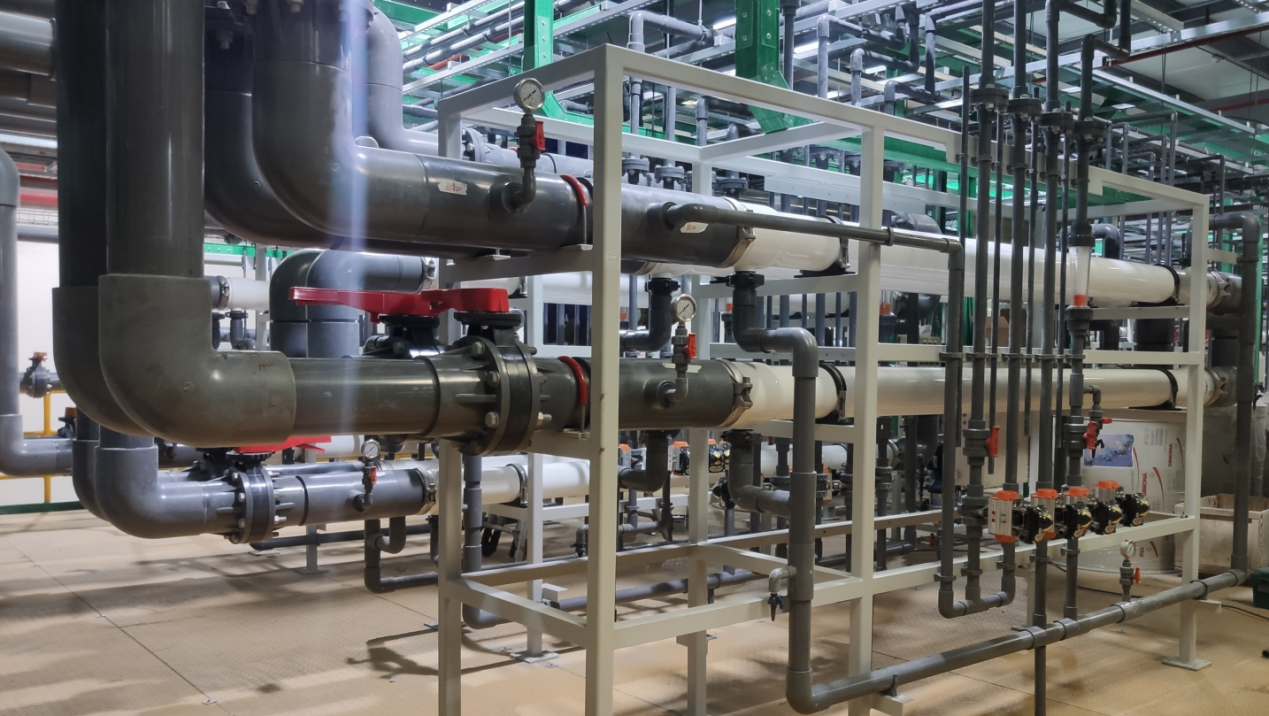
Industrial wastewater treatment
textile-dyeing wastewater
1. Printing and dyeing wastewater is the wastewater discharged from printing and dyeing factories that mainly process cotton, linen, chemical fibers, and their blended products. The amount of printing and dyeing wastewater is relatively large, with 100-200 tons of water consumed per ton of textile processed, of which 80-90% becomes wastewater. Textile printing and dyeing wastewater has the characteristics of large water volume, high organic pollutant content, high alkalinity, and significant water quality changes, making it one of the difficult to treat industrial wastewater. Wastewater contains dyes, size, additives, oils, acids and alkalis, fiber impurities, sand substances, inorganic salts, etc.
2. Classification of printing and dyeing wastewater
(1) Desizing wastewater: With a small amount of water and a high concentration of pollutants, it mainly contains size and its decomposed products, fiber chips, acids, starch alkali and enzyme pollutants with high turbidity; The wastewater is alkaline with a pH value of around 12. When using starch size, the BOD and COD is high, and the water is of good biodegradability; When using synthetic size, the COD is very high, the BOD is less than 5mg/L, and the water is of poor biodegradability.
(2) Scoring wastewater: With a large amount of water and high concentration of pollutants, it mainly contains cellulose, citric acid, wax, oil, alkali, Surfactants, nitrogen-containing compounds, etc. The wastewater has strong alkalinity, high water temperature, and a brown color. The COD and BOD are very high, reaching thousands of milligrams per liter. The pollution of chemical fiber Scouring wastewater is relatively light.
(3) Bleaching wastewater: With a large amount of water and light pollution, it mainly contains residual bleaching agent, a small amount of acetic acid, oxalic acid, and thio
Sodium sulfate, etc.
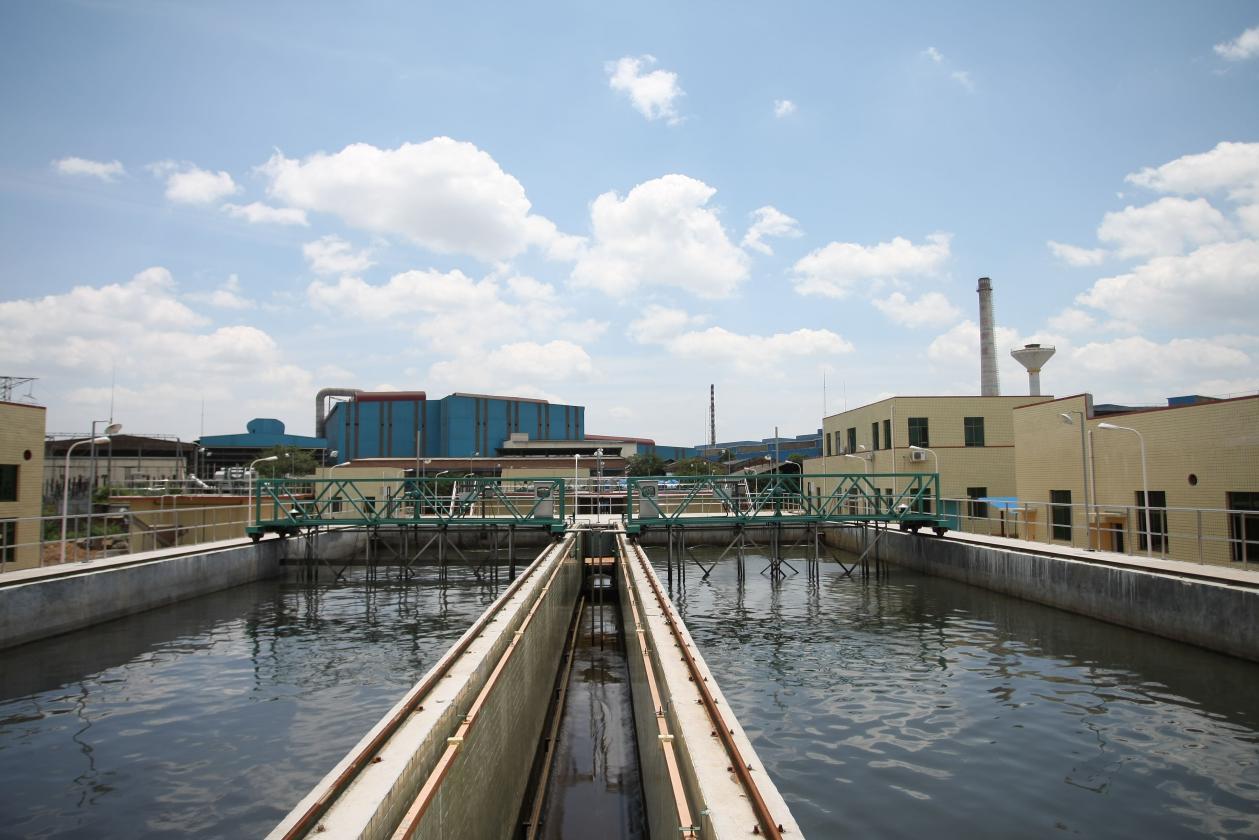
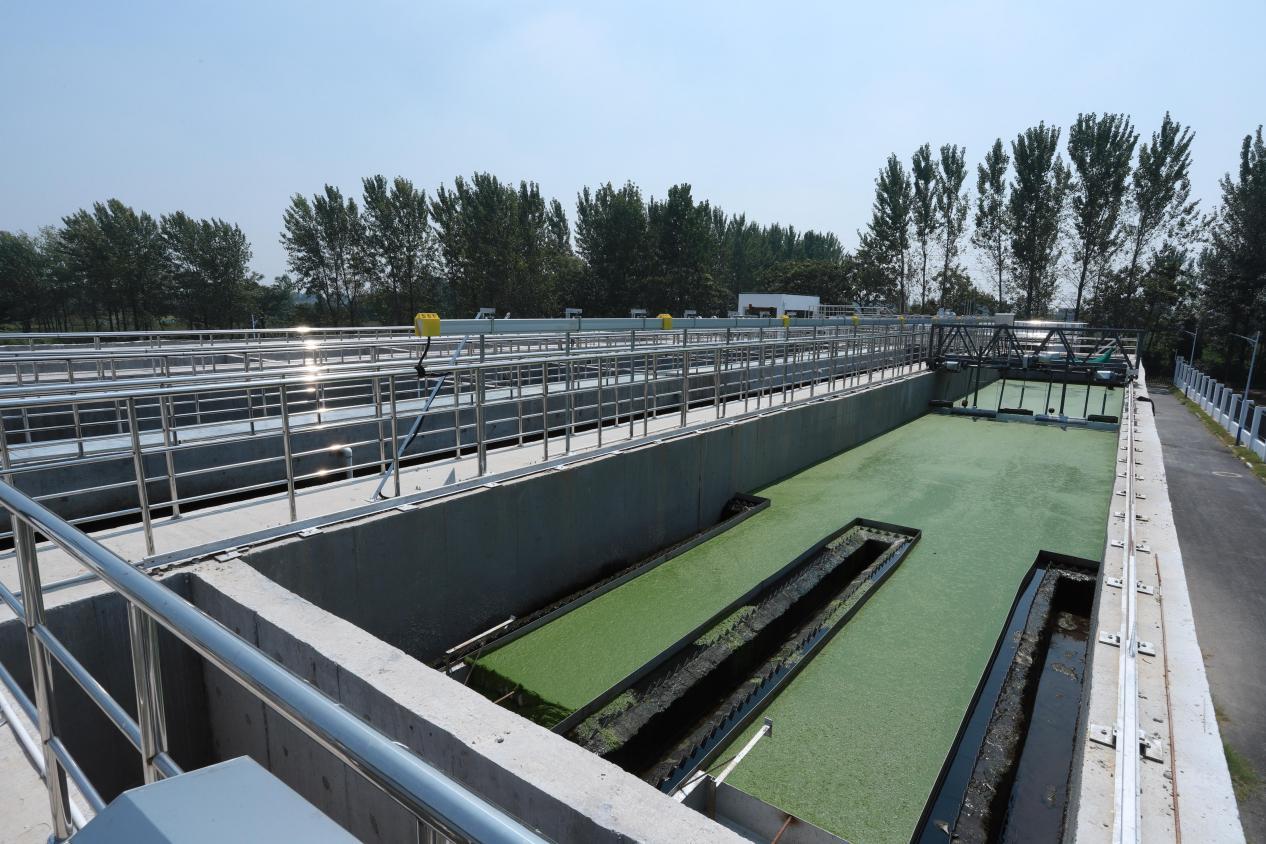
Industrial wastewater treatment
textile-dyeing wastewater
(4) Mercerizing wastewater: with high alkali content and NaOH content ranging from 3% to 5%, most printing and dyeing factories recover it through evaporation and concentration, therefore, mercerizing wastewater is generally rarely discharged, and the wastewater discharged after repeated use of the process is still strong
Alkalinity, BOD, COD, and SS are all high.
(5) Dyeing wastewater: The water quality is variable and sometimes contains toxic substances such as ( sulfurized alkali, tartar vomit, tcAniline, copper sulfate, phenol, etc.) , alkaline, sometimes reaching a pH of 10 or above (when using sulfide or reducing dyes), containing organic dyes, surfactants, etc. High chromaticity, low SS, higher COD than BOD, and poor biodegradability.
(6) Printing wastewater: containing size, with high BOD and COD.
(7) Wastewater from the finishing process: mainly contains fiber chips, resin, formaldehyde, oil agents, and size, with a small amount of water.
(8) Alkali reduction wastewater: It is generated from the alkali reduction process of polyester imitation silk, mainly containing polyester hydrolysate terephthalic acid
Ethylene glycol, among which the content of terephthalic acid is as high as 75%. Alkali reduction wastewater not only has a high pH value (generally>12), but also has a high concentration of organic matter. The CODcr in the wastewater discharged from the alkali reduction process can reach up to 90000 mg/L, with polymer organic matter and some dyes are difficult to be biodegraded, and this type of wastewater belongs to high concentration and difficult to be degraded organic wastewater.
Industrial wastewater treatment
Textile-dyeing Wastewater
3. Characteristics of printing and dyeing wastewater
Printing and dyeing wastewater is the wastewater discharged from printing and dyeing factories that mainly process cotton, linen, chemical fibers, and their blended products.
The amount of wastewater is relatively large, with 100-200 tons of water consumed per ton of textile printing and dyeing processed, of which 80-90% becomes wastewater. Textile printing and dyeing wastewater has the characteristics of large water volume, high organic pollutant content, high alkalinity, and large water quality changes, and is one of the difficult to be treated industrial wastewater. The wastewater contains dyes, size, additives, oil agents, acid and alkali, fiber impurities, sand substances, inorganic salts, etc.
4. Treatment methods for printing and dyeing wastewater
(1) Adsorption method
The most commonly used method in physical treatment is adsorption, which mix the powder or particles of porous materials such as activated carbon or clay with wastewater, or allowing wastewater to pass through a filter bed composed of its particles, to remove pollutants from the wastewater by the method of adsorbing a substance onto the surface of a porous material or removing it by filtration. The adsorption rate of activated carbon, BOD removal rate, COD removal rates reached 93%, 92%, and 63%, respectively.
(2) Coagulation method
There are mainly coagulation sedimentation method and coagulation gas flotation method, and the coagulants used are mostly aluminum or iron salts, among which The bridging adsorption performance of basic aluminum chloride (PAC) is better. The main advantages of coagulation method are simple process flow and operation. Easy management, low equipment investment, small footprint, and high decolorization efficiency for hydrophobic dyes; The disadvantage is operating costs
High sludge content, difficult dehydration, and poor treatment effect on hydrophilic dyes.
(3) Oxidation method
The ozone oxidation method can achieve good decolorization effect on most dyes, but it is insoluble in sulfidation, reduction, coatings, etc.The decolorization effect of water dyes is poor. From the operating experience and results at home and abroad, it can be seen that this method has good decolorization effect, but it consumes a lot of electricity,There are difficulties in large-scale promotion and application. The oxidation method for treating printing and dyeing wastewater has high decolorization efficiency, but equipment investment and power consumption Further reduction is needed.
(4) Electrolytic method
The ozone oxidation method can achieve good decolorization effect on most dyes, but for sulfidation, reduction, coatings, etc. which are insoluble in water, the decolorization effect is poor. From the operating experience and results at home and abroad, it can be seen that this method has good decolorization effect, but it consumes a lot of electricity, There are difficulties in large-scale promotion and application. The oxidation method for treating printing and dyeing wastewater has high decolorization efficiency, but equipment investment and power consumption need further reduction.
(5) Biological methodThe surface accelerated aeration and contact oxidation methods account for the majority of biological treatment methods for printing and dyeing wastewater in China. In addition, blast aeration activated sludge method, jet aeration activated sludge method, and biological rotary disc method have also been applied, and the biological fluidized bed is still in testing period. Due to the low removal rate of chromaticity by organisms, usually around 50%, when the effluent chromaticity requirement is relatively high, physical or chemical treatment will be required.
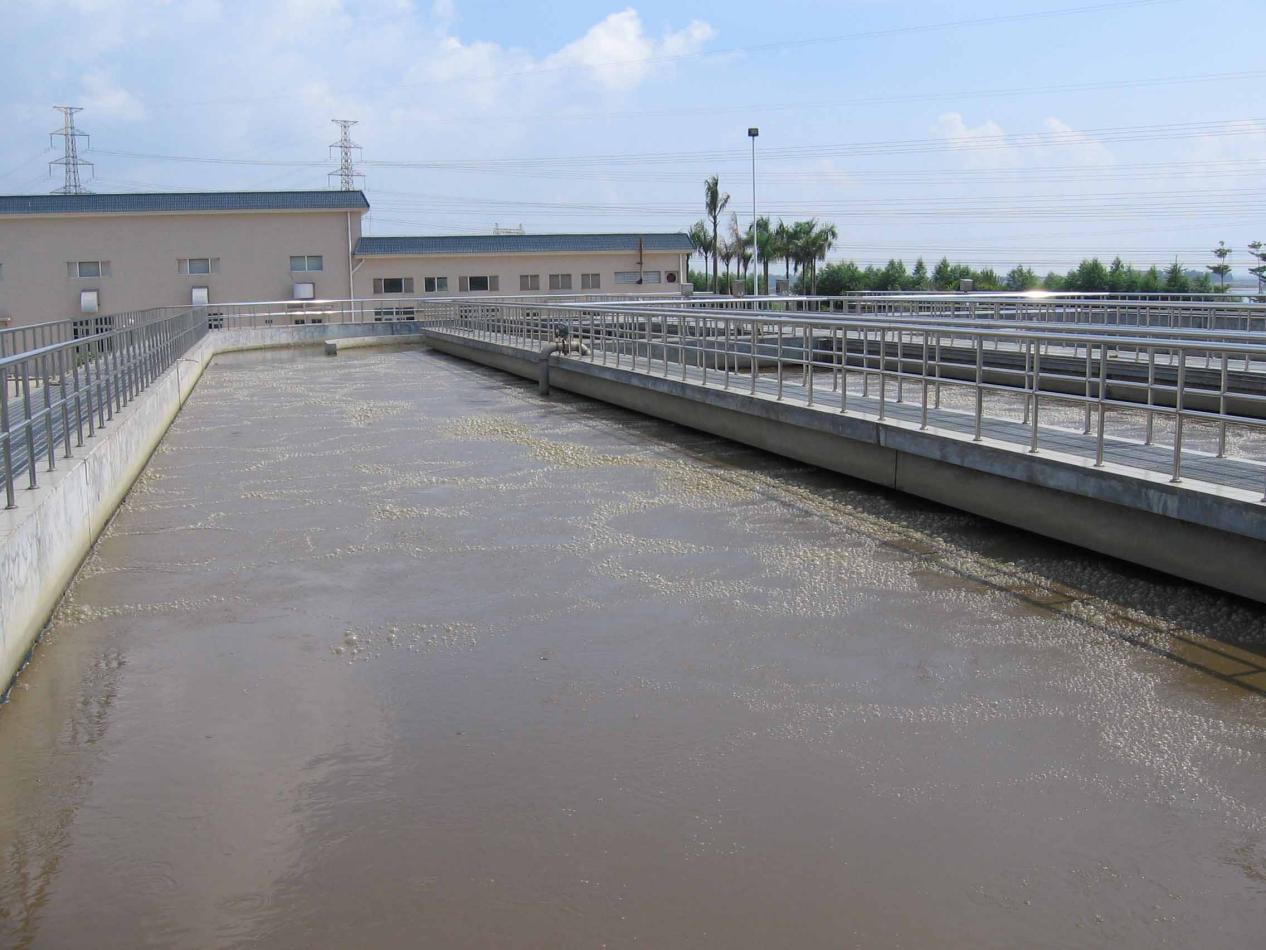
Industrial wastewater treatment
Fine chemical wastewater
Fine chemicals include: pharmaceuticals, pesticides, synthetic dyes, organic pigments, new materials, coatings, spices and essence, surfactants, additives, adhesives, food additives, feed additives, synthetic lubricant and lubricant additives, electronic chemicals, etc.
Wastewater quality and characteristics:
This kind of wastewater contains high concentration pollutants, , high COD value, many substances that are difficult to be biodegraded, and high chroma. The high concentration of ammonia nitrogen in fine chemical wastewater is mainly attributed to the extensive use of ammonia water as a raw material, precipitant, or detergent in the production process of certain fine chemical products, as well as the conversion of nitrogen-containing organic compounds such as aniline. High concentrations of ammonia nitrogen, especially free ammonia, can affect the biological system and produce toxic effects.
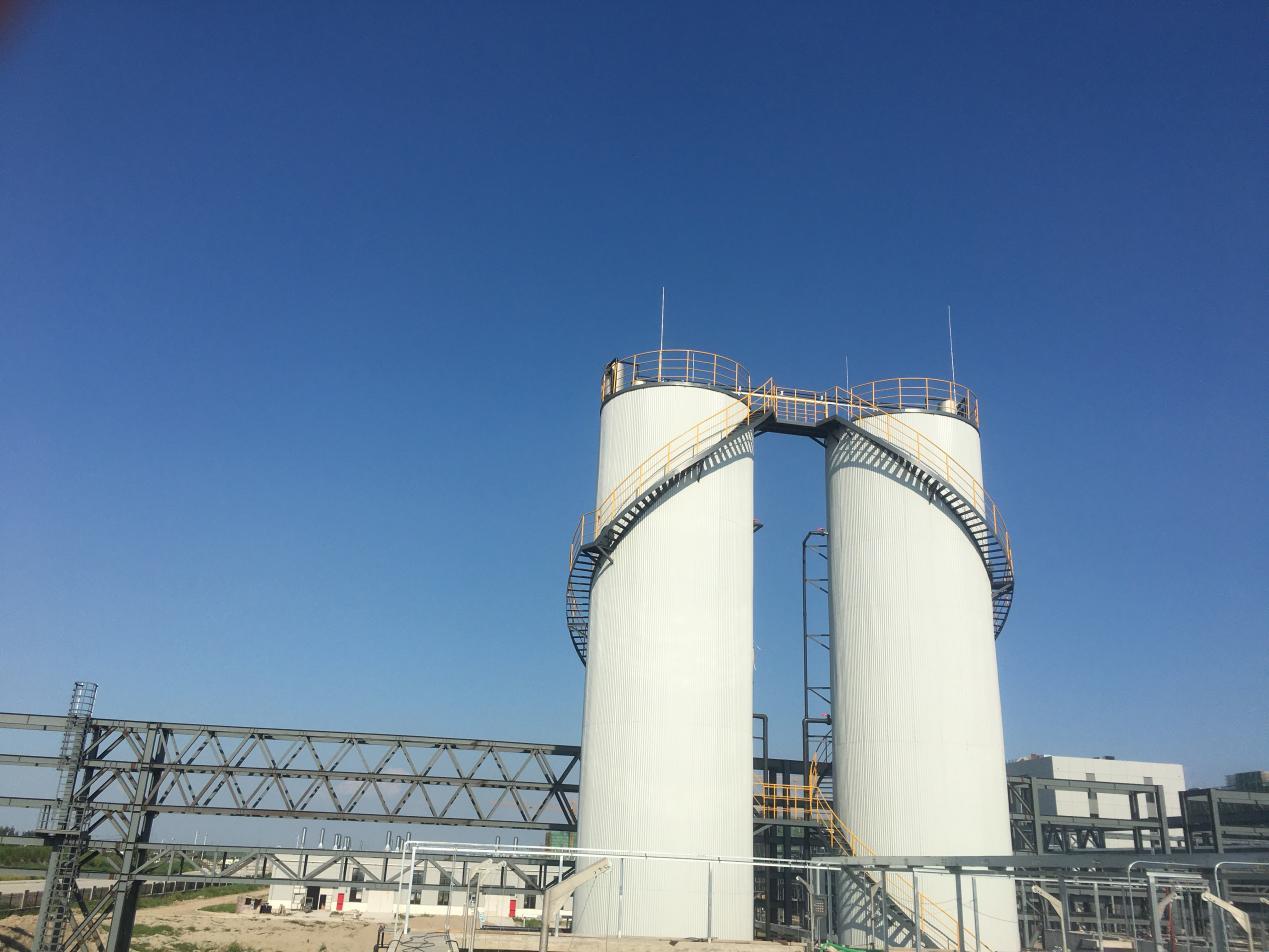
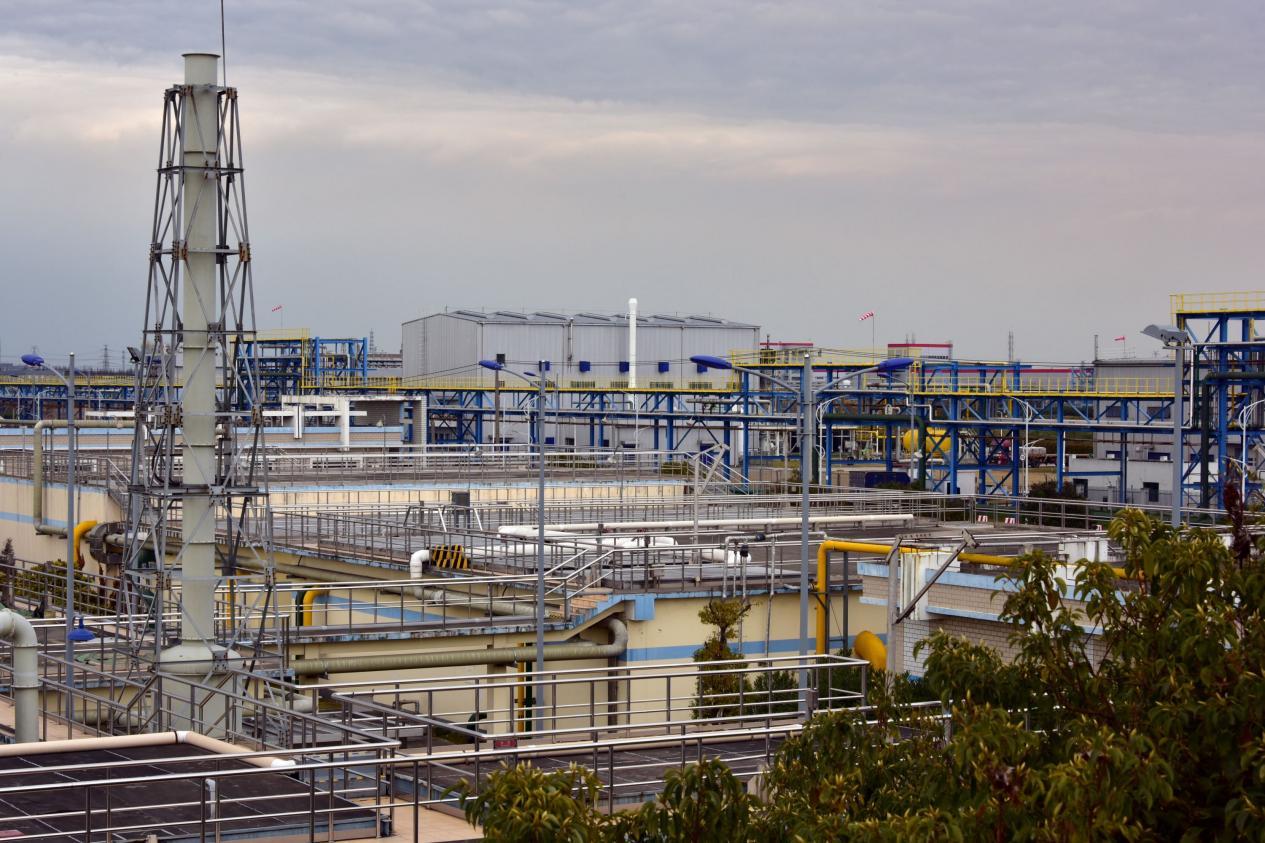
Industrial wastewater treatment
Fine chemical wastewater
Fine chemical wastewater is a typical toxic/difficult to be degraded industrial organic wastewater, characterized by high COD, high ammonia, and high chroma; The main components that pose a threat to microorganisms in fine chemical wastewater include COD, ammonia nitrogen, some heavy metal ions, dyes and their decomposed products, with a focus on organic pollutants; The organic components in fine chemical wastewater are mostly toxic/difficult to be degraded organic pollutants, which have a serious inhibitory effect on biological systems and are the main reason for the substandard effluent.
The pollutants in fine chemical wastewater are mostly organic substances with complex structures, toxic, harmful, and difficult to biodegrade, making treatment difficult and costly.
Industrial wastewater treatment
Treatment Process for Fine Chemical Wastewater
Pre-treatment:
Most organic chemical wastewater is treated by biochemical technology. Prior to this, pre-treatment of the wastewater is necessary to eliminate unfavorable factors for biochemical treatment. This includes measures such as solvent recovery, removal or conversion of toxic and harmful substances, and advanced oxidation.
Improving biochemical treatment capacity:
Increase the capacity of the regulating tank and fully regulate the water quality and quantity; Dilute the high salinity wastewater with an appropriate amount of domestic sewage or domesticate the activated sludge: select appropriate process parameters such as pH, DO, etc.: add a facultative stage before aerobic treatment, or add fillers in the rear section of the regulating tank to improve the biodegradability of the wastewater; Wastewater containing toxic and harmful substances should be treated using a fully mixed biochemical treatment device as much as possible; Additives can be added to improve the efficiency of biochemical treatment; Coagulation and sedimentation treatment of biochemical effluent can improve COD removal rate: new bacterial strains screened or genetic engineering can be used to solve the problem of difficult biochemical treatment of special organic wastewater.
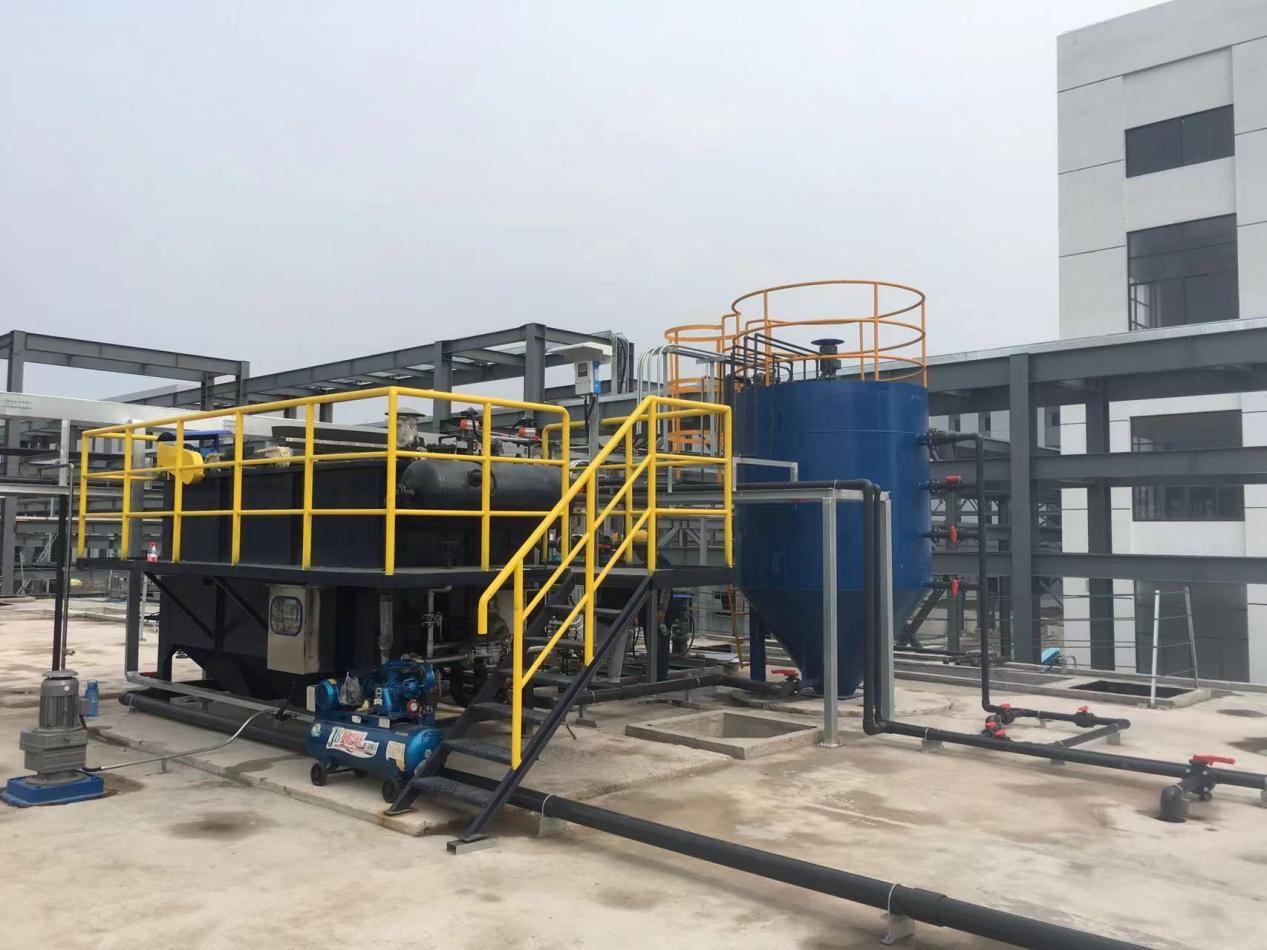
Industrial wastewater treatment
pesticide wastewater
1.Introduction of Pesticide Wastewater
Pesticide wastewater refers to the wastewater discharged by pesticide factories during the pesticide production process. The quality and quantity of wastewater are unstable. Mainly including: benzene containing wastewater, organic phosphorus containing wastewater, high concentration salt containing wastewater, high concentration phenol containing wastewater, and mercury containing wastewater. Pesticide varieties, so there are many types of pesticide wastewater with complex water quality accordingly.
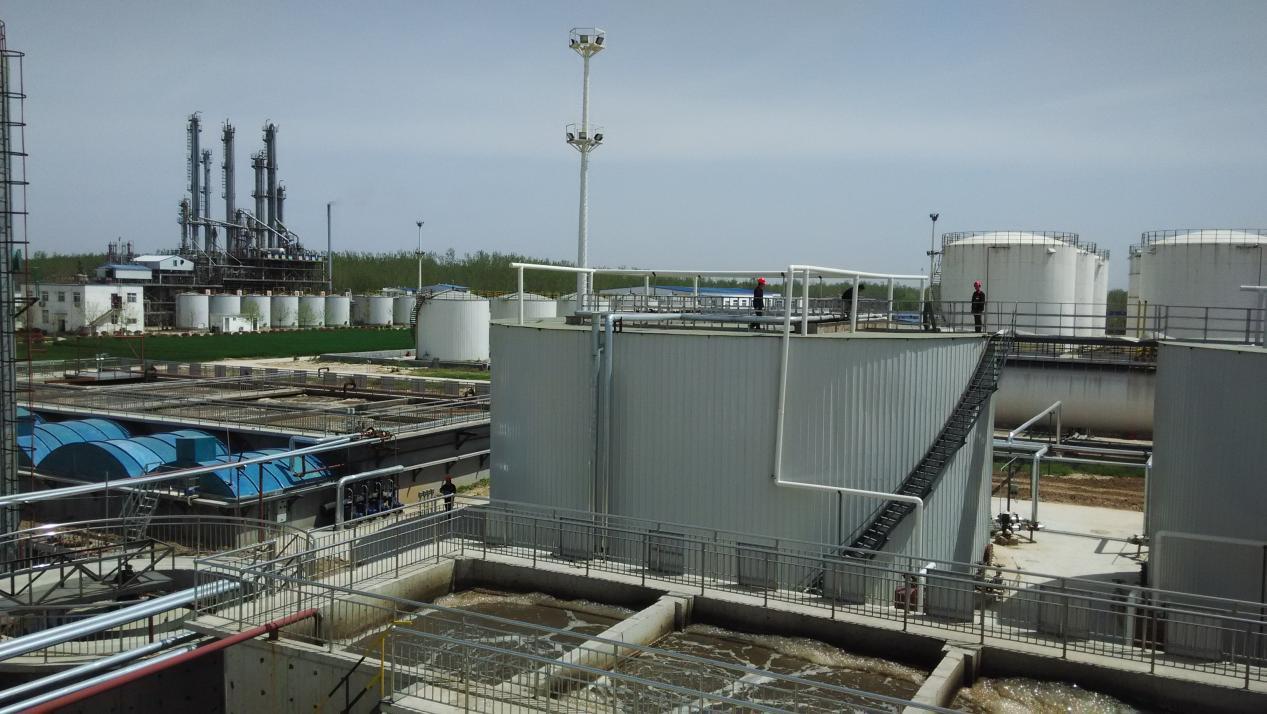
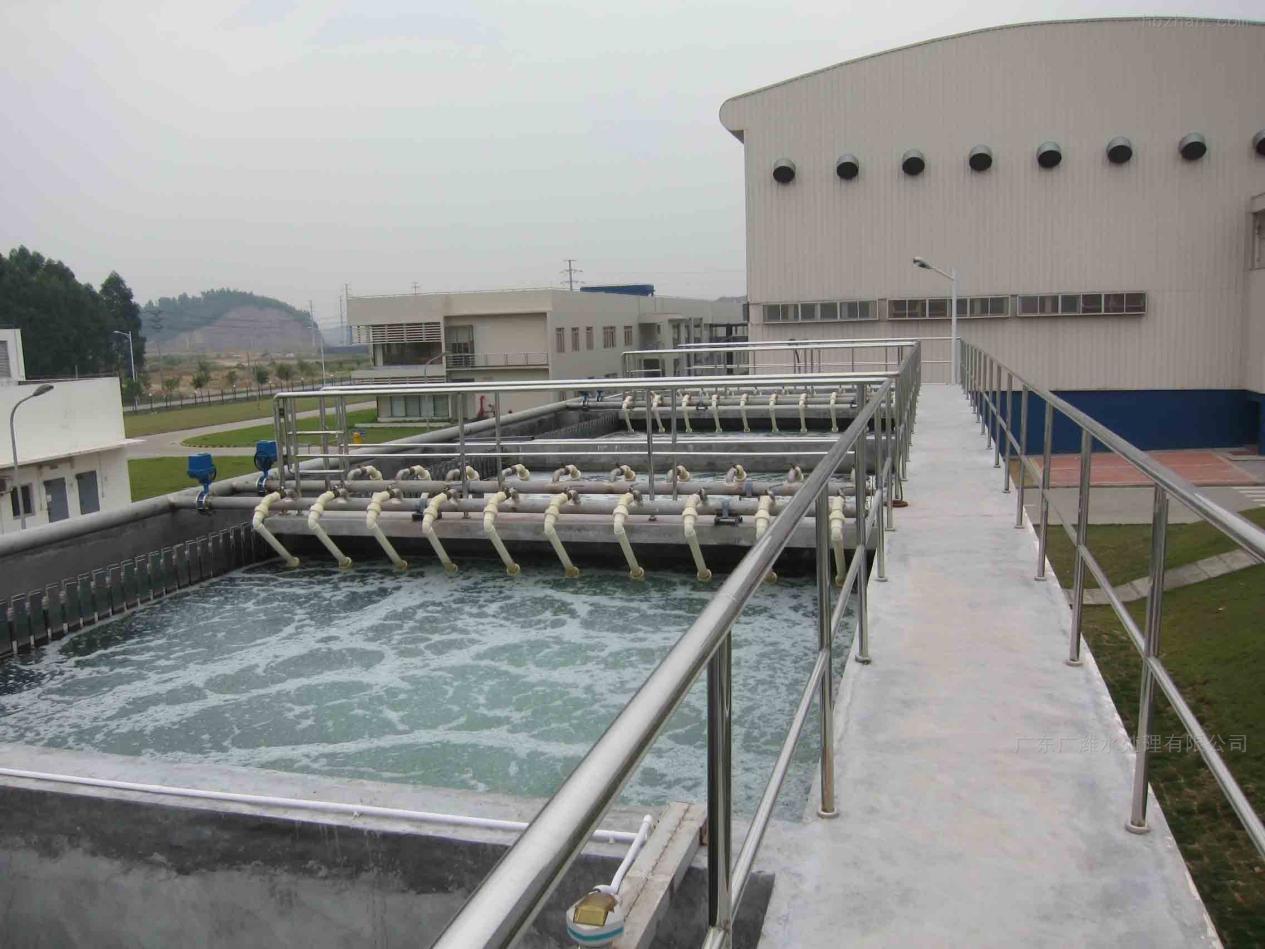
Industrial wastewater treatment
Pesticide Wastewater
2. Characteristics of pesticide wastewater
There are a wide variety of pesticides, and the water quality of pesticide wastewater is complex. Its main characteristics are:
① High concentration of pollutants, COD (chemical oxygen demand) can reach tens of thousands of milligrams per liter;
② The toxicity is high. In addition to pesticides and intermediates, wastewater also contains toxic substances such as phenols, arsenic, mercury, and many substances that are difficult to degrade by organisms;
③ Has a foul odor and is irritating to the respiratory and mucous membranes of humans;
④ The water quality and quantity are unstable. Therefore, pesticide wastewater causes serious environmental pollution.
Industrial wastewater treatment
pesticide wastewater
3. Treatment Process for Pesticide Wastewater
The purpose of pesticide wastewater treatment is to reduce the concentration of pollutants in pesticide production wastewater, improve the recycling rate, and strive to achieve***
Transformation. The treatment methods for pesticide wastewater include activated carbon adsorption, wet air oxidation, solvent extraction, distillation, and activated sludge methods. However, developing new pesticides with * * * *, low toxicity, and low residue is the direction of pesticide development. Some * * * have banned the production of organochlorine and organomercury pesticides such as hexachlorocyclohexane, and actively research and use microbial pesticides, which is a new way to fundamentally prevent environmental pollution from pesticide wastewater
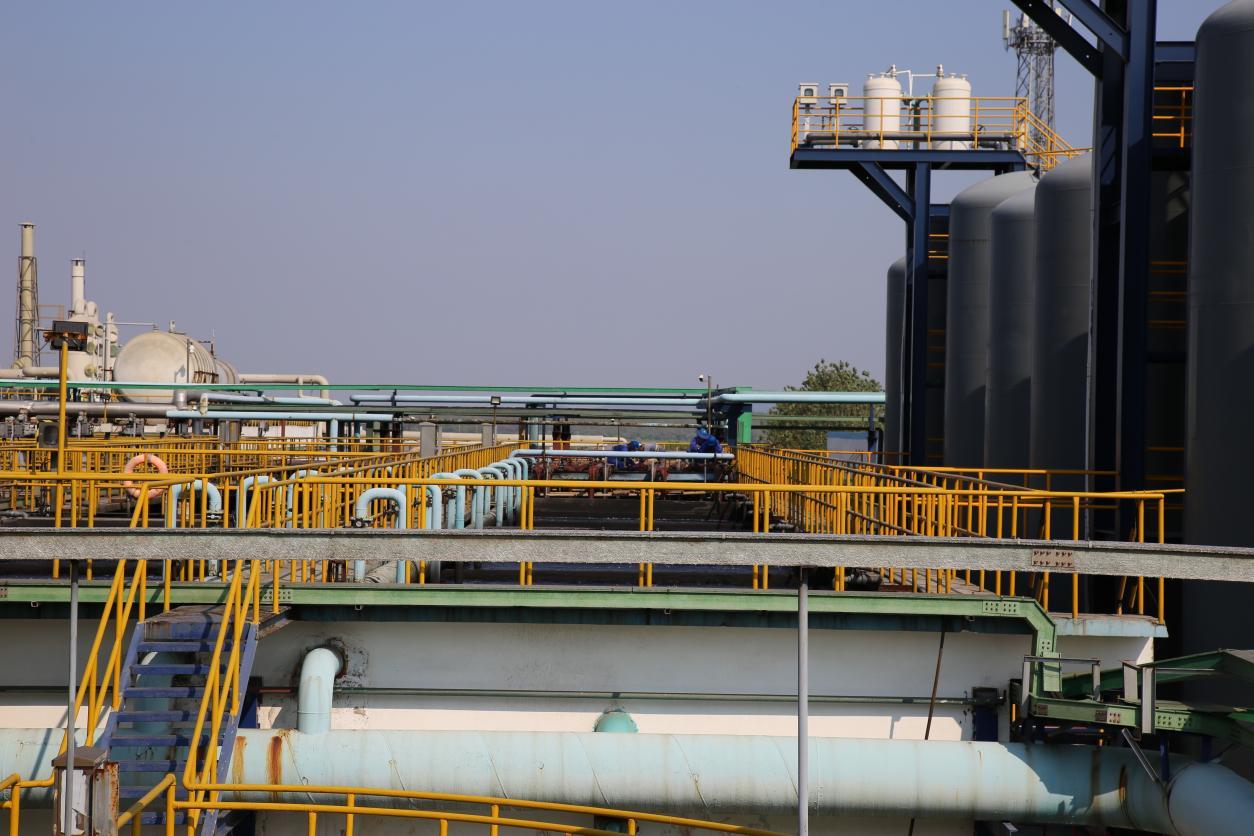
Industrial wastewater treatment
New Material Wastewater
Polymer new materials include special rubber, engineering plastics, functional chemicals, environmentally friendly coatings, etc., and they will discharge high concentration industrial wastewater - new material wastewater during the production process.
The main wastewater of new material wastewater to be treated is process wastewater, which is discharged during the reaction, filtration, precipitation and other processes of the production process, such as circulating cooling water, cleaning solution of reaction products, filtration separation solution, waste gas treatment wastewater, etc. And the pollutants contained in it are not only unreacted monomers and reaction aids (benzene series, compounds, phenolic compounds, etc.), but also other pollutants such as oils, acids, alkalis, salts, suspended solids, etc.
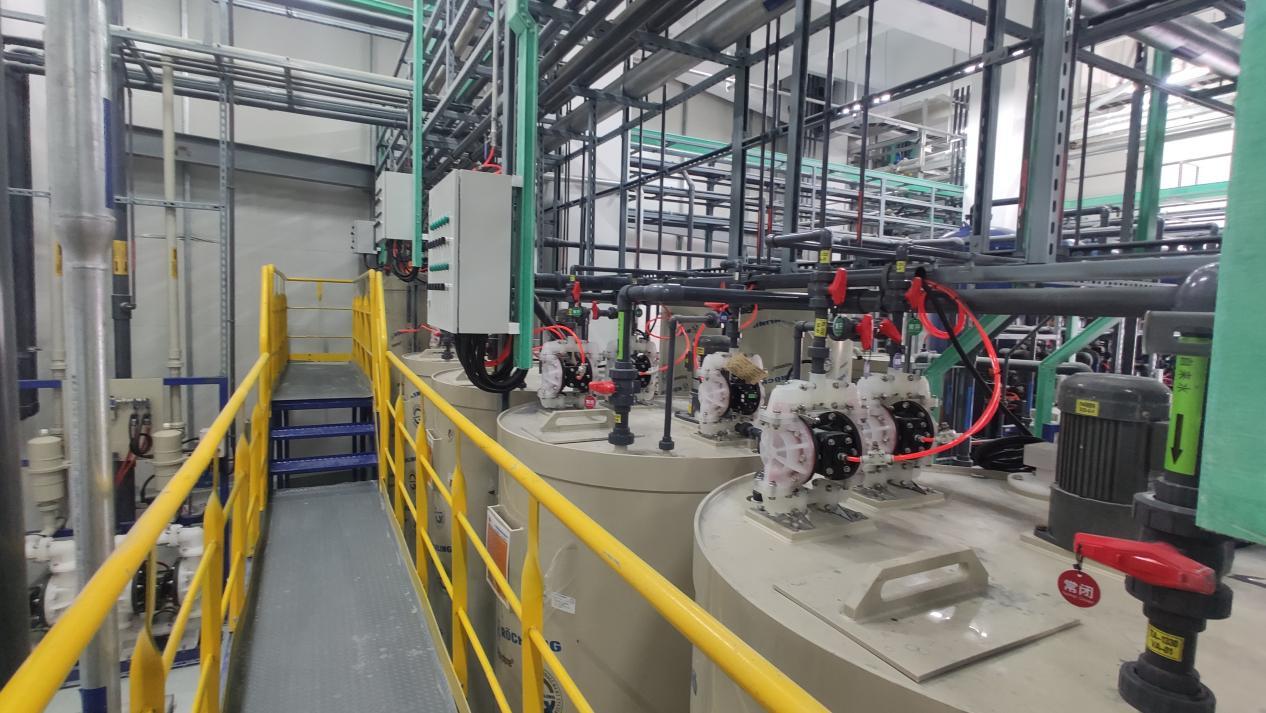
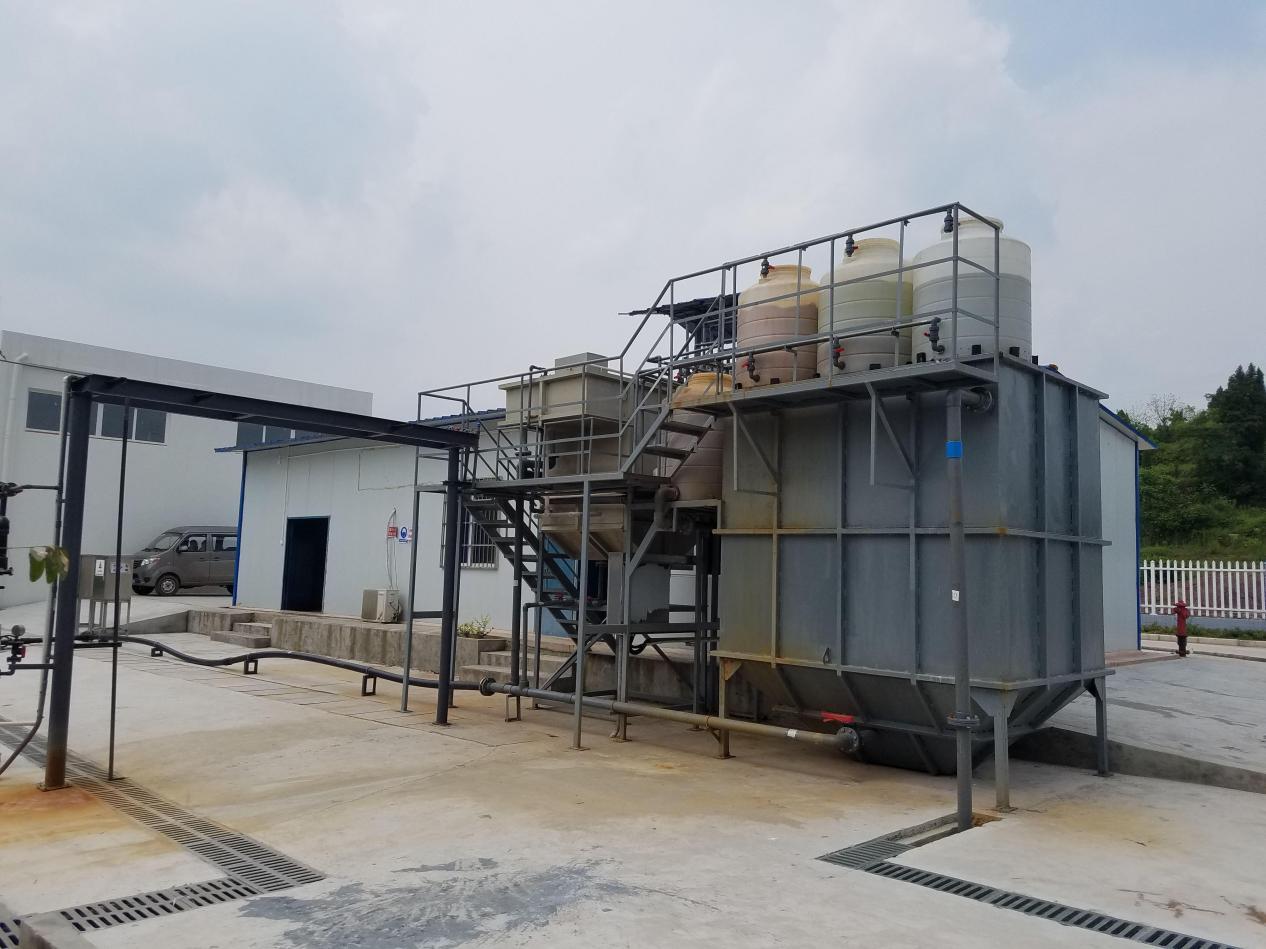
Industrial wastewater treatment
New Material wastewater
Due to the production process, raw materials, additives, and other reasons, the discharged new material wastewater belongs to industrial wastewater that is difficult to treat, generally manifested as high concentration, complex composition, and poor biodegradability. For example, the COD concentration of wastewater discharged by a new material enterprise can reach 60000 mg/L, containing a large amount of organic matter which is difficult to be biodegraded. The treatment methods used are much more than other wastewater with good biodegradability, and the treatment time and process are very long.
Industrial wastewater treatment
New Material wastewater
Our plan for this type of new material wastewater is to adopt targeted treatment methods during the pre-treatment process. Then wastewater after pre-treatment will be mixed with other low concentration wastewater and enter the biochemical treatment process. Whole process will be pre-treatment (physicochemical)+biochemical treatment (anaerobic+aerobic)+advanced oxidation deep treatment.
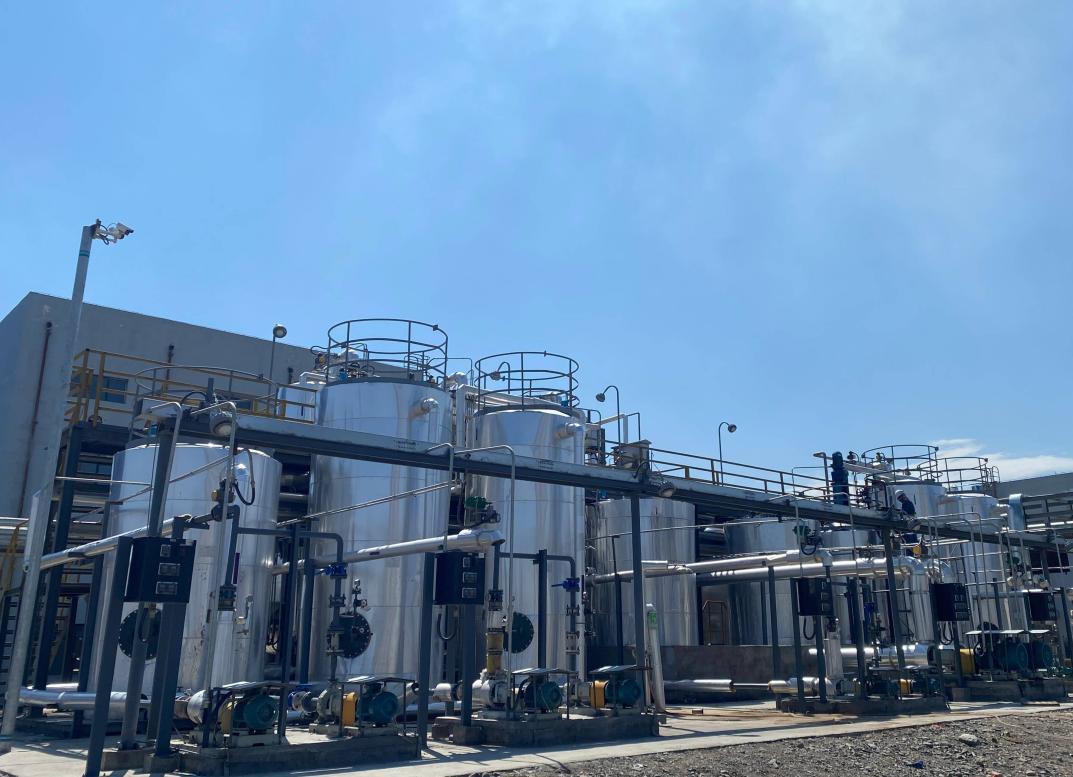
Industrial wastewater treatment
Pharmaceutical wastewater treatment
Source of pharmaceutical wastewater:
Pharmaceutical wastewater is usually divided into two types, namely biopharmaceutical wastewater and chemical pharmaceutical wastewater.
1. Biopharmaceutical wastewater refers to the wastewater generated by the fermentation and filtration of organic raw materials such as grains through the activities of microorganisms, and the extraction and refining of drugs.
2. Chemical pharmaceutical wastewater refers to the wastewater generated by synthetic pharmaceutical method that uses chemical methods to make organic substances react with inorganic substances to generate other substances.
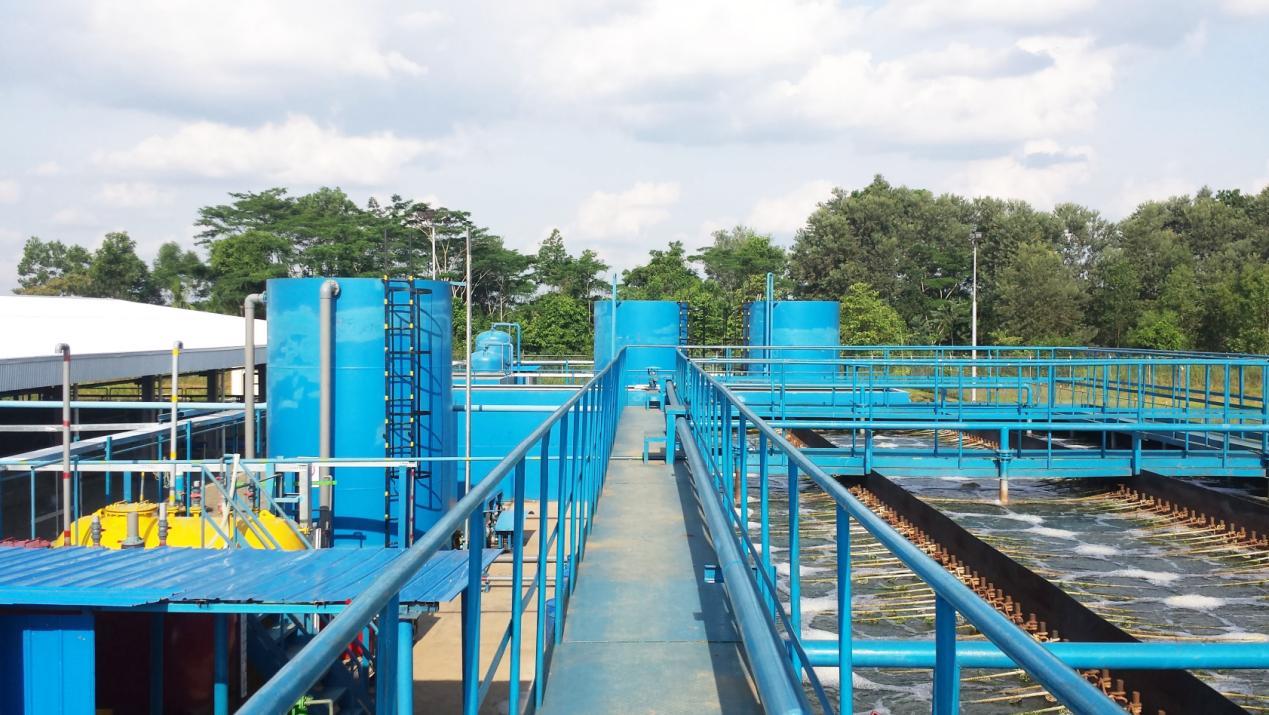
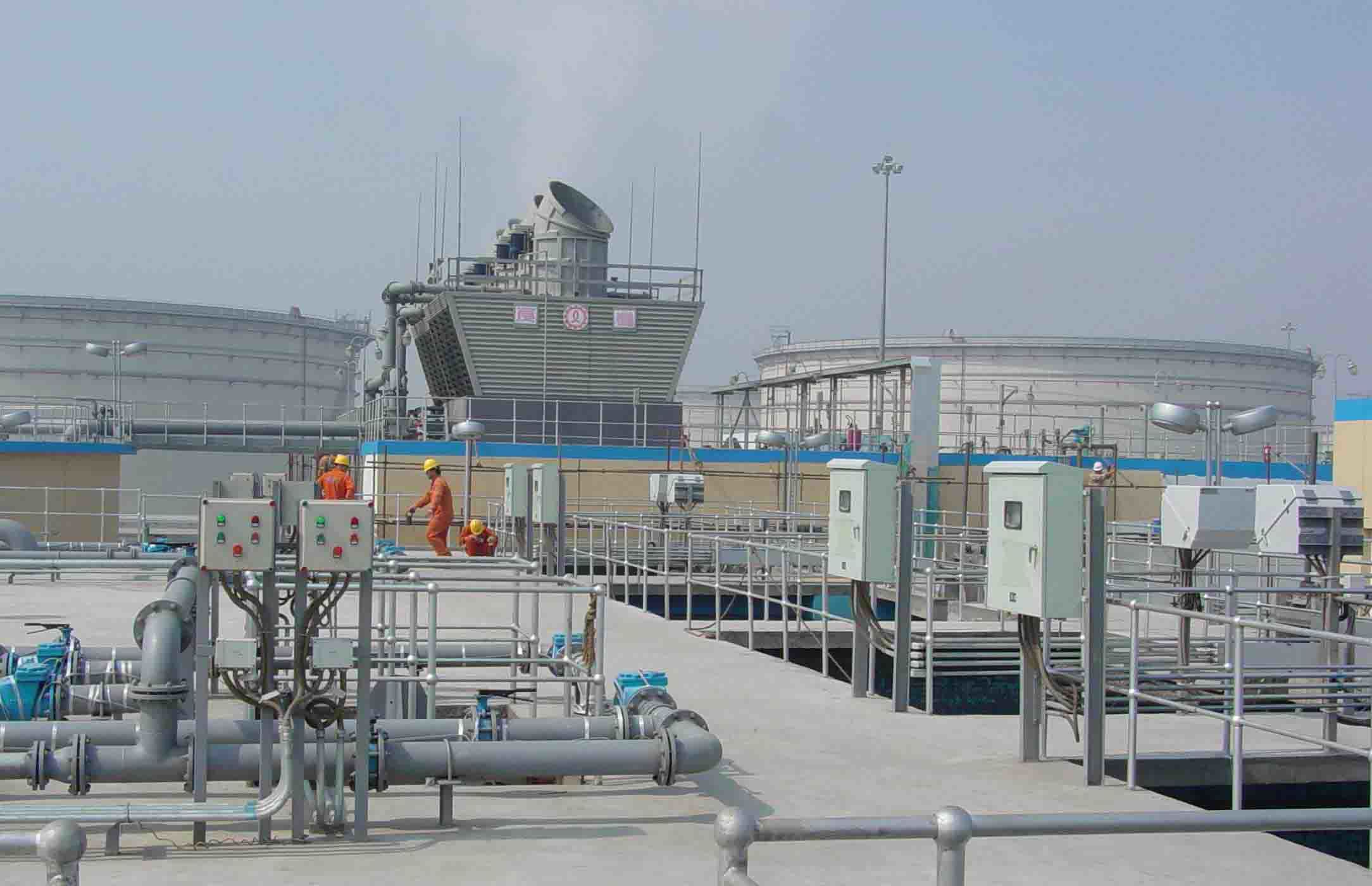
Industrial wastewater treatment
Pharmaceutical wastewater treatment
Characteristics of pharmaceutical wastewater:
1. Complex composition, multiple types of organic matter, high concentrations of COD, BOD, nitrogen and phosphorus
2. High concentration of refractory pollutants, high biological toxicity, and poor biodegradability
3. High chromaticity, high SS concentration
4. Unstable water quality and quantity
5. Salt concentration is generally high
Industrial wastewater treatment
Pharmaceutical wastewater treatment
Treatment Process for Pharmaceutical Wastewater:
There are three methods for treating pharmaceutical wastewater: biological method, chemical method, and physicochemical method. Due to the characteristics of pharmaceutical wastewater quality, one single pharmaceutical wastewater treatment method cannot achieve the satisfied treatment effect, so a combination of multiple treatment processes will be applied.
High concentration pharmaceutical wastewater not only has high COD concentration, but also contains a large amount of organic pollutants. At the same time, it has the characteristics of complex composition, high chromaticity, high toxicity, and poor biodegradability. Therefore, when treating high concentration wastewater, it is necessary to adopt a separate pre-treatment method to improve the biodegradability of high concentration wastewater.
High concentration wastewater and high salt wastewater after pre-treatment can enter regulating tank and mix with low concentration wastewater, then enter biochemical treatment system.
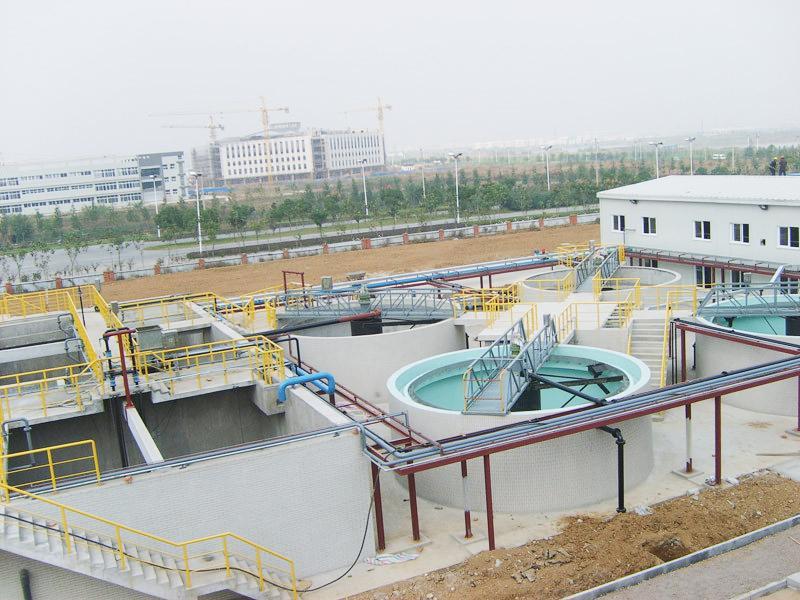
Huanke Environmental Protection Technology
HOTLINE:
Address:Gongye 1st Street, Weicheng District, Weifang City, Shandong Province China
Contact:Zhang Gong
Phone:+86-18865361829
Email:sdhuanke@163.com


Consult
Copyright © 2023 Shandong Huanke Environmental Protection Technology Co., Ltd
